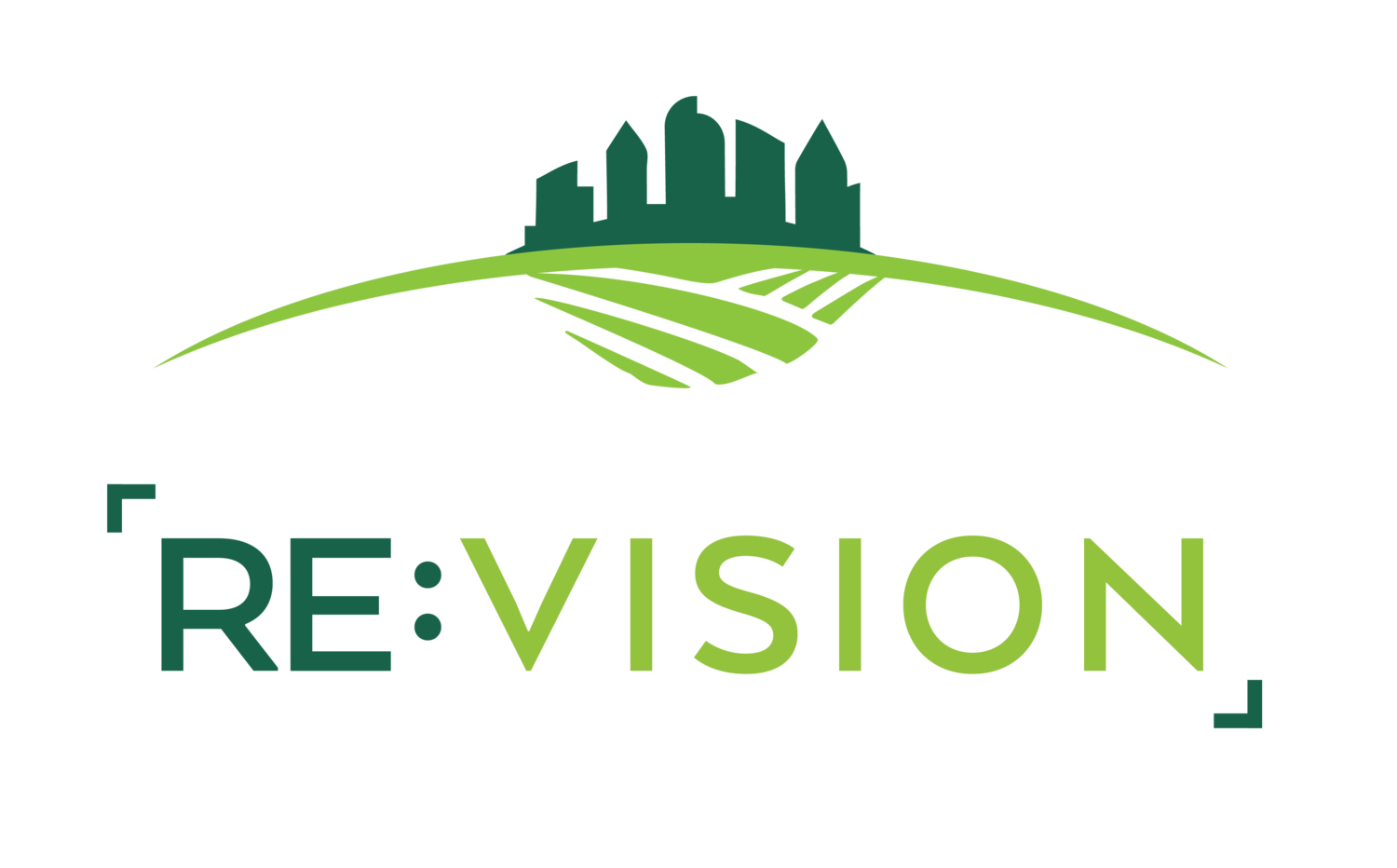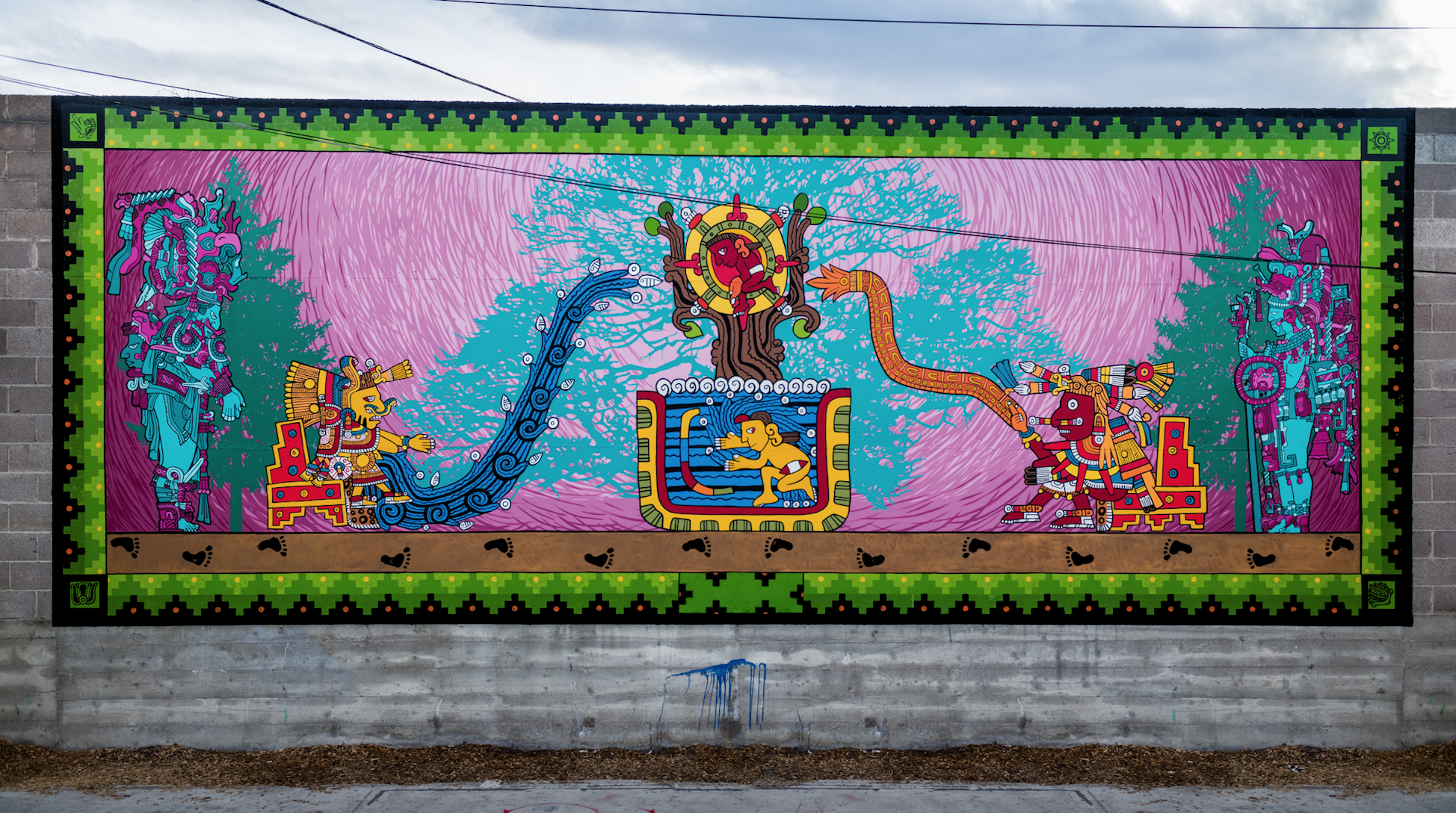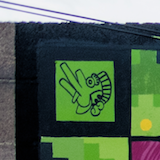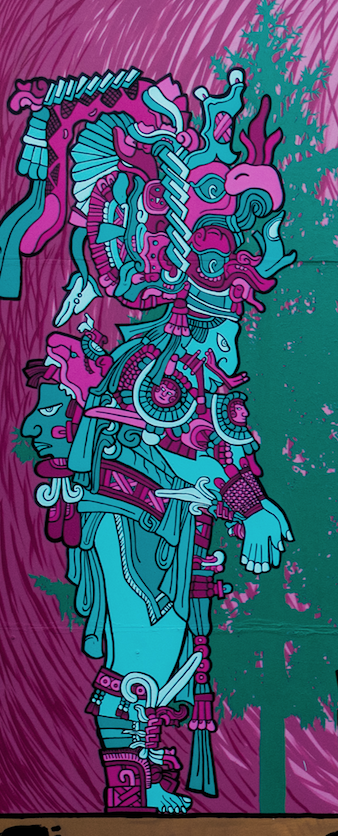The Season of Creation
Photo Credit: Jess Elysse Kornacki, Art of Her
One only needs to take a look at the volatile weather lately to tell that Spring is a time of conflict for the Earth. It is letting go of the frosty winter weather, the ground is thawing, and some of our favorite flowers are beginning to fight their way to the surface. The particularly tough ones have already started to bloom. Nothing says Spring in Colorado more than beautiful vibrant tulips covered by a fresh layer of snow.
So it only seems fitting, Santiago Jaramillo is ready to unveil his latest mural along Morrison Road. The theme of the piece is the duality of struggle, the push and pull between life and death, sun and moon, order and chaos; the combined 2 energies that make 1. In this case, one vibrant mural that represents one very vibrant community straddling two worlds.
Westwood is a community on the brink. In last week’s blog, we talked about the specifics behind why. This week, we want to talk about how art is being used as a way to combat gentrification, and create a place for the community that is currently here.
Santiago grew up in Westwood and he’s seen the neighborhood change. Growing up it was a very working class neighborhood, but then the Summer of Violence hit (1993) and Westwood changed dramatically. The working class left and the neighborhood became rundown and neglected. A few years later, Mexicans started moving in and Santi says, “they brought new life and it very much had that working class energy again.” Around that same time, Santi was struggling with drugs, and as a new young father, he wanted to clean up. Enter Cauhtemok, and artist who quickly became his mentor and teacher. He taught Santiago about the indigenous roots of the Mexican culture. Santiago says learning about what his culture is truly rooted in helped him find his way. Since then, Santiago has changed the face of Morrison Rd., with beautiful, vibrant murals celebrating the Mexican and Indigenous cultures of the neighborhood.
Santiago’s latest mural is vibrant, and incredibly detailed, so we sat down with him to chat about the symbolism behind it. Here is what he had to say:
About the border:
The 3 levels of the pyramids represent Ometeotl, or, duality. The two energies build on each other like levels in the pyramid to create one (the final level of the pyramid)
Around the 4 corners:
You’ll notice the 4 elements represented here; air, sun, water & Earth.
Along the bottom:
The footsteps represent Via Verde, a community engagement driven project designed to introduce green infrastructure practices into Westwood, and improve health and community. It also represents the community retracing its footsteps back to its ancestral roots.
To the right:
Tonatiuh
The Aztec symbol of the sun, Tonatiuh, with the symbol of fire coming out of his hand. Tonatiuh was believed to be the leader of Tollan, heaven, each day fighting battles from sunrise to sunset and throughout his journey across the sky.
To the left:
Chalchihuitlicue
Chalchihuitlicue, (She Who Wears a Green Skirt), Aztec symbol of rivers, lakes, streams, and other freshwaters, goddess of birth. Out of her hand, the symbol of water.
Along both sides:
Earth's protectors
Two Mayan warriors dropping seeds into the ground. They serve as Earth’s guardians, and perhaps also a small homage to Re:Vision’s mission of cultivating thriving, resilient communities by creating a community food system.
In the Center:
Both Chalchihuitlicue and Tonatiuh come together to create the beautiful image in the middle. This coming together is known as Atlachinolli. When fire and water together you get steam, breath of the Earth. In short; creation. Within the image you will see the tree of life, the primordial sea, the sun and a child. The cycle of creation.
Analyzing the duality of the piece, and seeing the conflict of two sides strikes a chord in this ongoing conversation of gentrification. The piece, and other murals along Morrison Road have certainly given the community a significant facelift. But the content of the murals is what causes true transformation. In Santiago’s case, learning about his indigenous roots and the beauty of his culture, helped him turn around his life and find his calling. He hopes it will do the same for community members and passersby. It’s all about going back to our ancestor’s ideas, and making things sacred again, because we are all connected. The goal being that two sides can come together to find a solution to an issue while honoring each other’s unique backgrounds and needs.
Santiago says, “…at some point conflict in nature causes creation.” Whether that is the conflict of Spring, or the current conflict Westwood is experiencing, Santiago Jaramillo is going to keep creating.
To hear more about Santiago's work, and to learn about how he is using art in Westwood as a means to combat gentrification, join Re:Vision, Creative Exchange and Confluence-Denver for IdeaLab on April 17, made possible through the generous support of the Bonfils-Stanton Foundation.
The Via Verde Mural was sponsored by The Trust for Public Land as part of the 2017 Westwood Chile Fest. The guiding vision behind Santiago’s mural was inspired by the communities work with Cool Connected Westwood to address climate justice issues in Westwood such as lack of walkable and bikable streets, water quality, tree canopy, and quality parks and trail experiences. This was one of seven new murals added to Morrison Road, with collaborative funding from Denver Urban Arts Fund, The Trust for Public Land and BuCu West.
Creation








